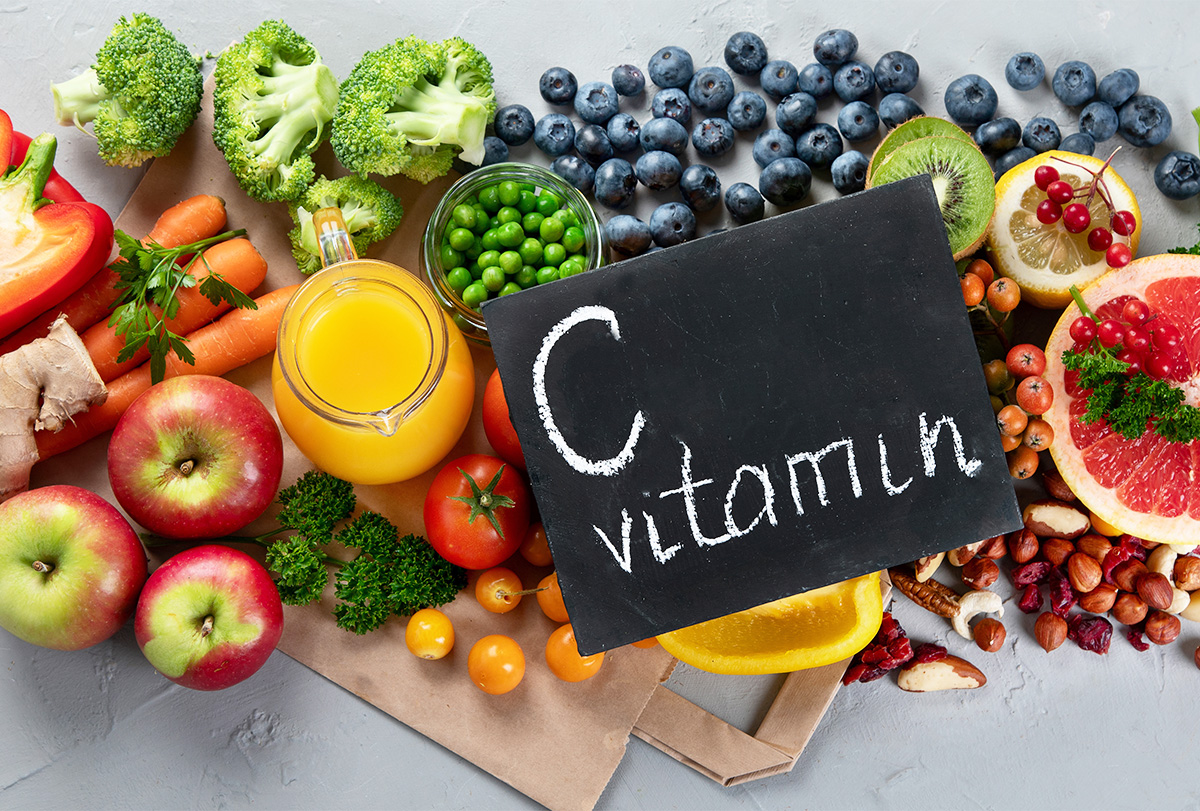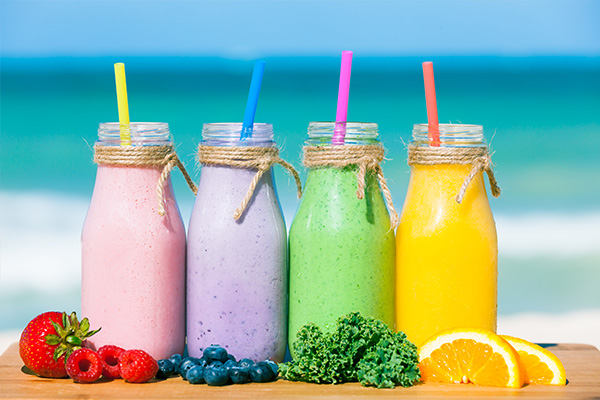In this article:
Vitamin C, also known as ascorbic acid, is an essential nutrient that is needed for many life-sustaining biological processes.

It is a water-soluble vitamin, which means it readily dissolves in water and is absorbed by the tissues. Excess vitamin C is excreted via urine, unlike fat-soluble vitamins that are stored in the fatty tissue of the body.
Since the body is incapable of producing or storing vitamin C, you must maintain a steady supply of this essential nutrient through your daily diet or supplementation if needed.
This article discusses the importance of vitamin C for human health, what happens if you don’t get enough of it, and some simple ways to include it in your daily diet.
Recommended Daily Intake of Vitamin C
Vitamin C is needed in different quantities for different age groups:
- Infants aged 0–12 months: 40–50 mg/day
- Children aged 1–3 years: 15 mg/day
- Children aged 4–8 years: 25 mg/day
- Males and females aged 9–13 years: 45 mg/day
- Males aged 14–18 years: 75 mg/day
- Females aged 14–18 years: 65 mg/day
- Males aged 19 to >70 years: 90 mg/day
- Females aged 19 to >70 years: 75 mg/day
Table 1: Recommended dietary allowances (RDAs) for vitamin C (1)
| Age | Male | Female | Pregnancy | Lactation |
|---|---|---|---|---|
| 0–6 months | 40 mg* | 40 mg* | ||
| 7–12 months | 50 mg* | 50 mg* | ||
| 1–3 years | 15 mg | 15 mg | ||
| 4–8 years | 25 mg | 25 mg | ||
| 9–13 years | 45 mg | 45 mg | ||
| 14–18 years | 75 mg | 65 mg | 80 mg | 115 mg |
| 19+ years | 90 mg | 75 mg | 85 mg | 120 mg |
| Smokers | Individuals who smoke require 35 mg/day more vitamin C than nonsmokers. |
* Adequate Intake (AI) (1)
Role of Vitamin C in the Body

Vitamin C is vital in several essential body functions: (2)
- It is used in tissue building and repair.
- It supports immune function.
- It is a powerful antioxidant that helps fight free radical damage in the body.
- It facilitates the maturation and survival of neurons.
- It modulates neural transmission.
- It is involved in various brain functions, such as cognition, learning, and memory.
- It helps bring down high blood pressure.
- It helps lower uric acid levels in the body.
Vitamin C: A Powerful Antioxidant
Vitamin C is an antioxidant. It is known to reduce inflammation, promote collagen synthesis (growth), and prevent free radicals from causing stress and damage to cells. (3)
Vitamin C for Better Iron Absorption
Iron can be consumed from heme (animal-based foods) and non-heme (plant-based foods) sources.
Research suggests that when vitamin C is consumed in the same meal as non-heme iron sources, it facilitates iron transport across the intestinal lumen and assists in increased absorption from dietary intake.
Vitamin C intake in general is also believed to assist with cellular storage of iron, although more research is needed. (4)
Signs of Vitamin C Deficiency
Vitamin C deficiency is most notably associated with scurvy and can be characterized by bleeding gums, generalized weakness, anemia, and/or skin hemorrhages. (5) Scurvy is rare in developed countries but can occur with severe dietary restrictions and/or food avoidances.
Other effects of lack of vitamin C intake can include:
- Poor wound healing
- Bruising easily
- Joint pain
- Bone disease in children (severe cases)
Vitamin C deficiency can be treated with high doses of vitamin C (usually from supplemental intake) and can be resolved fairly quickly. Treatment should be supervised by a medical professional.
ALSO READ: Vitamin C Deficiency: Symptoms, Diet and Recovery Time
Best Dietary Sources of Vitamin C

Foods highest in vitamin C tend to be citrus fruits such as oranges, kiwi, lemon, and grapefruit, as well as vegetables such as broccoli, cauliflower, and Brussels sprouts. Other foods with high vitamin C content include bell peppers, tomatoes, papaya, pineapple, mango, winter squash, cantaloupe, berries, and leafy greens such as kale and spinach.
Microwaving and steaming these foods, storing them for prolonged periods, or exposing them to light tends to reduce their vitamin content, so it’s best to avoid these methods.
Choose juices in cartons instead of clear containers, and use fruits/vegetables immediately. You can also consume foods that are fortified with vitamin C, such as cereals and beverages with product labels that indicate the addition of vitamin C.
Are Cauliflower and Broccoli Good Sources of Vitamin C?
Yes, they are! Remember that cooking or steaming can reduce some naturally occurring vitamin C, so try to consume them raw if possible.
If you have a medical reason for which you cannot consume raw foods, then follow guidelines for consumption of these foods as recommended by your medical provider.
One cup of broccoli contains ~80 mg of vitamin C (6) (80% daily value (DV) for females aged 19+ years and 67% DV for males aged 19+ years). One cup of cauliflower contains ~50–60 mg of vitamin C (7) (90% DV for females aged 19+ years and 75% DV for males aged 19+ years).
Make the Most of Your Vitamin C Intake

Here are some simple ways to include vitamin C in your daily diet to reap its maximum benefits:
- Add vitamin C-containing foods to smoothies or yogurts. Adding spinach to most smoothies will not change the flavor drastically and can add a dose of vitamins and minerals!
- You can drink the freshly squeezed juices of citrus fruits, but avoid the packaged brands that often come with harmful preservatives and added sugar.
- Consume iron-rich foods with a vitamin C-rich fruit or vegetable, if possible.
- Fresh or frozen sources of fruits and vegetables can be equally beneficial. Choose items without added sauces or syrups to reduce unwanted sugar and sodium intake.
- Pigmented fruits and vegetables are usually high in antioxidants such as vitamin C, so a simple trick is to use them to add color to your meals! Enhance a simple rice side dish by adding some cooked spinach and tomatoes. Try making stir fry once weekly so you can add multiple different vegetables to one meal.
Side Effects of Vitamin C Overdose
Given that vitamin C is not stored by the body and is typically excreted once the body has maximized its utility, it is unlikely for an overdose of vitamin C to occur.
When consumed in high amounts, the most common side effects are diarrhea, nausea, abdominal pain, and gastrointestinal upset, as the body naturally will work to excrete unabsorbed vitamin C via the gastrointestinal tract.
Final Word
No nutrient by itself can improve your health significantly, unless consumed as part of an overall healthy and well-balanced diet. This means consuming everything in moderation to ensure that all your nutritional needs are fulfilled without going overboard.
Excess of even the most beneficial nutrient can damage your body in the long run. The same holds true for vitamin C. Many easily available fruits and vegetables are loaded with vitamin C and can be eaten as salads, smoothies, juices, or a variety of other dishes, but it’s preferable to eat them raw or lightly cooked when they are still fresh. Storing or heating these foods will deplete their vitamin C content.
If you fail to meet your daily recommended intake of vitamin C through foods alone or notice any signs of vitamin C deficiency, consult your doctor about the need for supplementation.
- Was this article helpful?
- YES, THANKS!NOT REALLY


